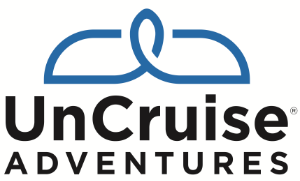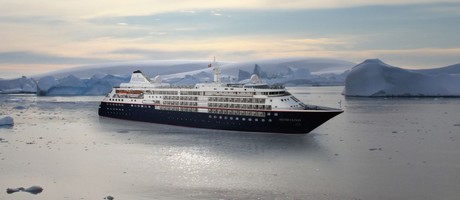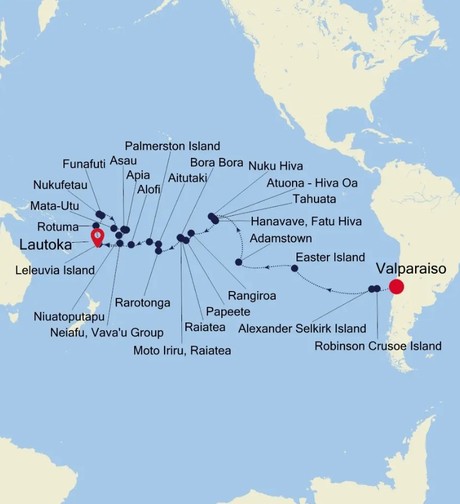Valparaiso to Lautoka - 52 Day South Pacific Luxury Expedition Cruise
Highlights
• Explore the mysterious and remote Easter Island, known for its iconic Moai statues. Immerse yourself in the island's rich history and culture while visiting archaeological sites and learning about the fascinating stories behind these colossal statues.
• Visit Pitcairn Island, famously known as the final refuge of the HMS Bounty mutineers. Explore the unique history of this small and isolated island and learn about the descendants of the mutineers who still call it home today.
• Discover the stunning beauty of the Marquesas Islands in French Polynesia. From Nuku Hiva to Hiva Oa and Tahuata, you'll have the opportunity to explore lush landscapes, pristine beaches, and experience the local Polynesian culture.
• Experience the enchanting paradise of Bora Bora in the Society Islands of French Polynesia. Enjoy the crystal-clear waters, overwater bungalows, and the opportunity to partake in water sports or simply relax on the idyllic beaches.
• Visit the beautiful Cook Islands, with stops in Rarotonga and Aitutaki. These tropical islands offer opportunities for snorkeling, exploring vibrant coral reefs, and enjoying the laid-back Polynesian atmosphere.
|
Book now |
Vista Suite. From
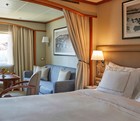
Veranda Suite. From

Deluxe Veranda Suite. From
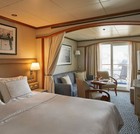
Medallion Suite. From

Royal Suite. From
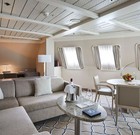
Grand Suite. From
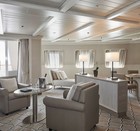
Silver Suite. From
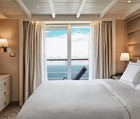
Owner's Suite. From
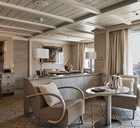
Vessel Type: Luxury Expedition
Length: 157 m
Passenger Capacity: 200/260
Built: 1994 Refurbished & Rebranded: 2017
After extensive refurbishment, Silver Cloud will be the most spacious and comfortable ice class vessel in expedition cruising. Her large suites, her destination itineraries and her unparalleled service make her truly special. Her five dining options will tantalise your taste buds and as 80% of her suites include a veranda, watching a breaching whale or a few cavorting penguins has never been so personal. Broad sweeping decks with multiple open spaces and a swimming pool complete what is surely the most distinctive expedition ship sailing today.
A limited number of guests, particularly with just 200 in polar waters, mean that Silver Cloud has the highest space to guest and crew to guest ratios in expedition cruising. With her 18 zodiacs, possibilities are almost limitless with ship-wide simultaneous explorations. Finally, a team of 19 passionate and dedicated experts are always at hand to ensure your voyage is enhanced every step of the way.
DECK 09 - Observation Lounge, Jogging Track
DECK 08 - Pool, Pool Bar, Hot Rocks, The Panorama Lounge, The Connoisseur’s Corner
DECK 07 - La Terrazza, The Spa at Silversea, Beauty Salon, The Library
DECK 06 - Lecture Theatre, The Fitness Centre, Reception/Guest Relations, Expedition Desk
DECK 05 - The Bar, Boutique, Casino
DECK 04 - Main Restaurant, Le Champagne, Launderette







Optional tours and excursions available. Please contact us for more details.
Inclusions
• Voyage on board in selected cabin category
• Butler service in every suite
• All meals on board*
• Beverages on board (Select wines, spirits and non-alcoholic beverages)
• Crew Gratuities (Excluding Spa & salon staff)
• Expedition excursions
• Lectures and entertainment on board
• Free wif-fi (Subject to coverage)
• Laundry service included for certain fare categories
• Self service laundry facilities available
• In country flights where required by the itinerary
*Some onboard restaurants incur an additional cost
• PRIVATE EXECUTIVE TRANSFERS
• INTERNATIONAL FLIGHTS - ECONOMY CLASS or Business Class upgrade at reduced rates
• AIRPORT TRANSFERS
Exclusions
• International flights unless otherwise stated
• Passport and visa costs if applicable
• Travel insurance
• Optional shore excursions
• Spa and Salon Treatments
• Complete valet services, including laundry, pressing and dry cleaning, are available at an additional charge
Our Associates Include


